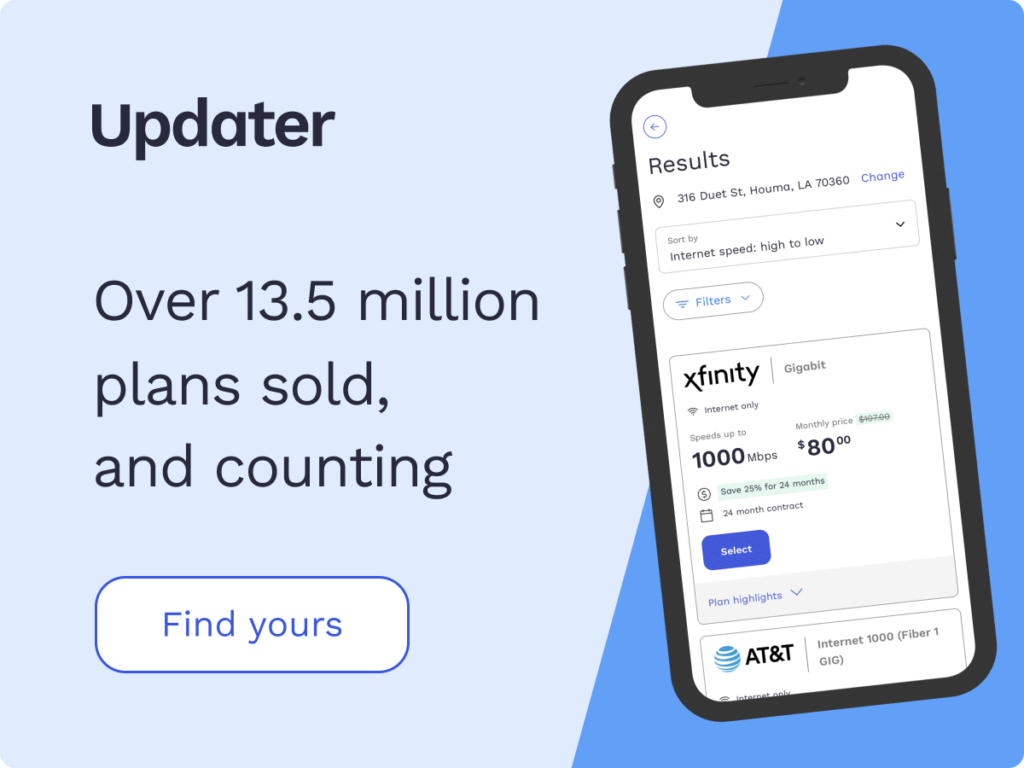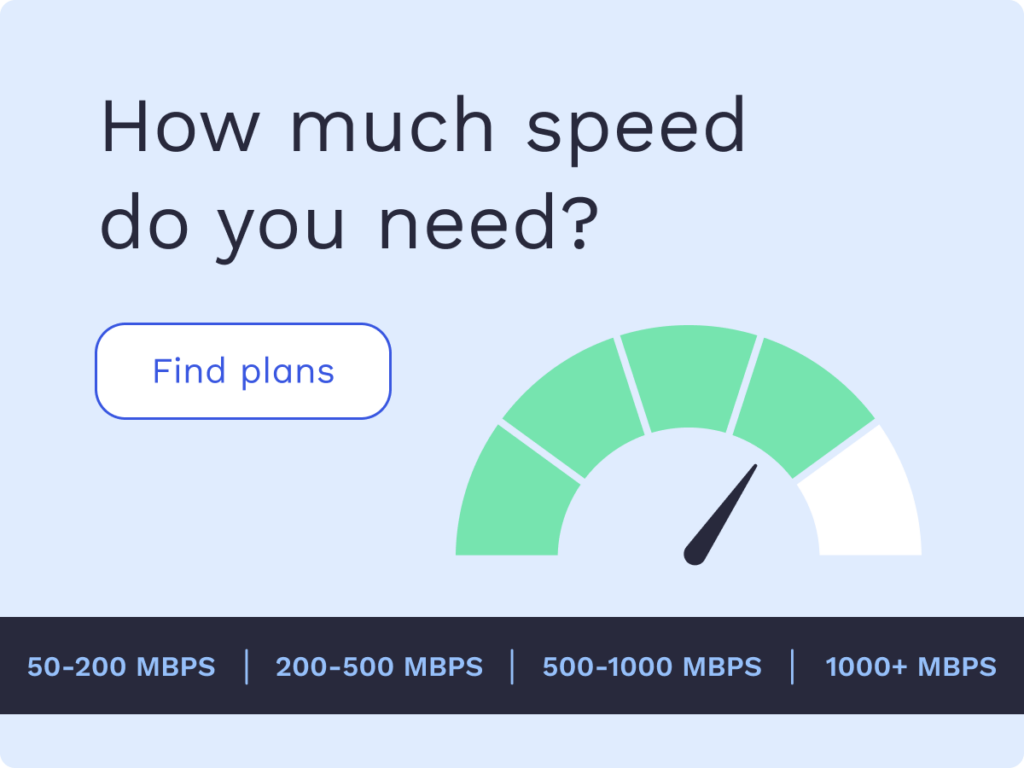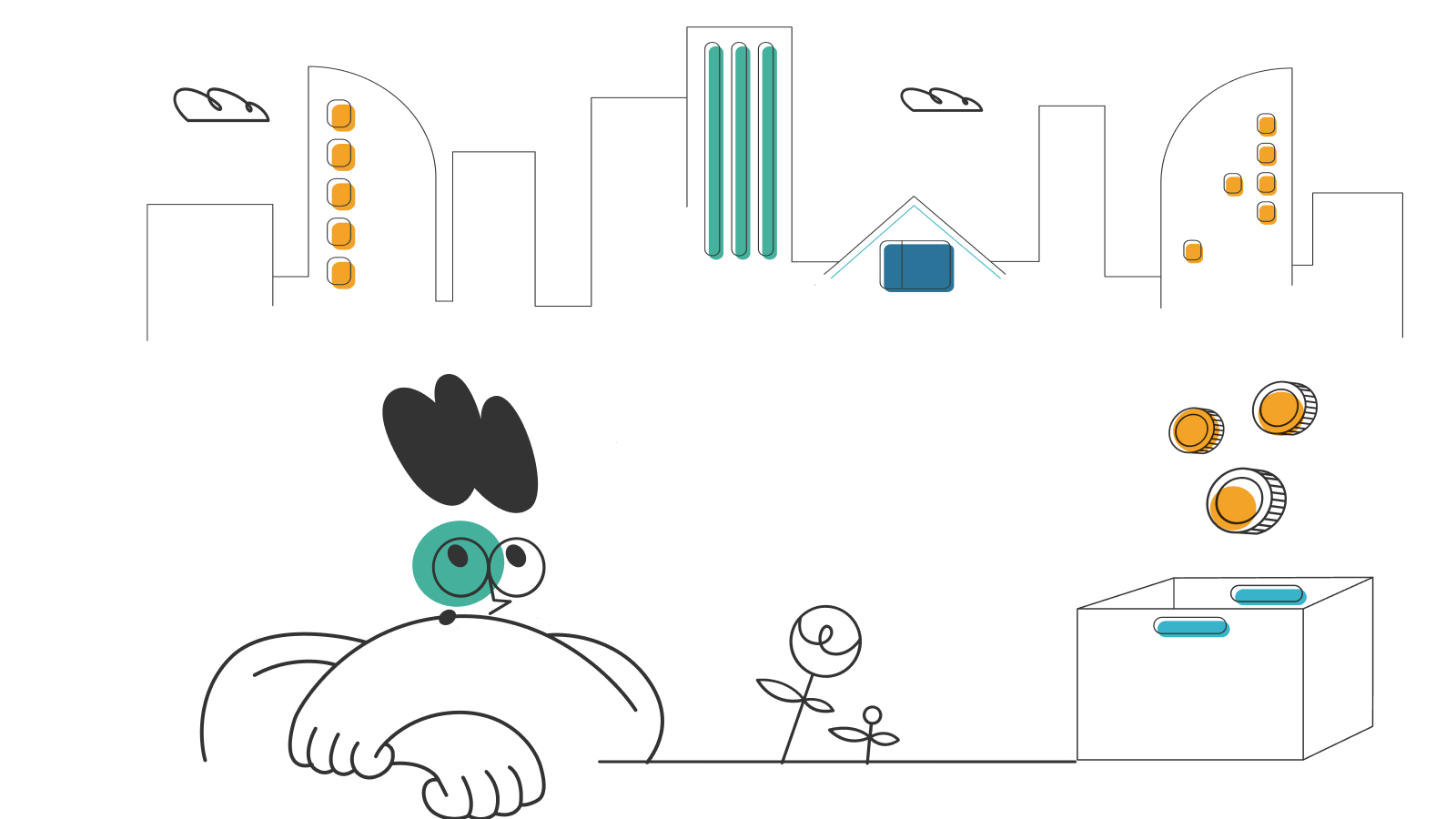How to Measure Internet Speed Test Results

When you sign up for home internet, internet service providers (ISPs) offer different speeds at varying prices. In general, the faster the speed, the more you pay for it. To determine whether you’re getting the speed your ISP promises, it’s a good idea to conduct periodic internet speed tests.
While it’s easy to conduct an internet speed test, knowing where to go and how to to it isn’t necessarily common knowledge. That’s why we’ve put together this detailed guide on what you need to know about internet speed measurements, along with how to perform a speed test and interpret the results.
- What to know about internet speed measurements
- How to conduct and internet speed test
- How to improve your internet speed
- Frequently asked questions (FAQs)
What to know about internet speed measurements
Before you conduct an internet speed test, it’s essential to familiarize yourself with key terminology. That way, you’ll have a better understanding of what the test results mean. Using that insight, you’ll know whether your current ISP and plan are meeting your usage needs or if it’s time to shop for a new provider.
How is internet speed measured?
There are several aspects when it comes to measuring the speed of your internet connection, including:
- Internet speed – Internet speeds are measured in units called megabits per second or Mbps, with higher Mbps indicating faster speeds. Both download and upload are measured in Mbps.
- Download (downstream bandwidth) – Another term that you should be familiar with is downstream bandwidth or simply download speed. It is the maximum rate at which an internet connection can receive data.
- Upload (upstream bandwidth) – Upstream bandwidth is commonly known as upload speed. It is another factor used to measure internet speed and is the maximum rate at which data can be sent.
- Ping – A Packet Internet or Inter-Network Groper (ping) is another unit used to measure your internet connection. Ping determines how fast a data signal can travel from your computer to a website. It is also used to troubleshoot and test connectivity and response time.
What is a good internet speed?
Internet speeds between 25 and 200Mbps are the sweet spot for the average home user. With these speeds, you can stream HD videos, have a Zoom meeting, and listen to music online at the same time.
Based on regular online activities, we have compiled a summary of various everyday internet tasks and the average download speed needed:
- Web browsing and email – 1 to 5Mbps minimum
- HD content on a streaming platform – 15 to 25Mbps minimum
- Stream 4K content or competitive online gaming – 40 to 100Mbps minimum
- Stream 4K content, play online games, and download large files – 200Mbps minimum
Why do advertised speeds and actual speeds differ?
It’s important to know that the speed advertised by an ISP might be different from what you can actually get. A 2021 Measuring Broadband America report by the Federal Communications Commission (FCC) explains in detail the differences between advertised speeds and actual speeds offered by ISPs.
On average, the actual internet speed is usually 20 to 50% below the speed advertised by the ISP. But the 2021 FCC report suggests that measured download speeds for most of the major broadband providers that were tested were 100% or better than advertised speeds during the peak hours of 7:00PM to 11:00PM. local time.
How to conduct and internet speed test
Step 1: Prepare for your internet speed test
There are several ways to measure your internet speed. But before you run any of the tests, you need to do the following:
- Turn off any ongoing downloads or uploads
- If you use a Virtual Private Network (VPN), turn it off for the test
These two steps ensure accurate reading by limiting the traffic to and from the speed test tool.
Step 2: Conduct your internet speed test
To perform your speed test, you can turn to the most widely used free internet speed tests online. These tests are reliable and display very accurate results.
Ookla
Ookla is one of the most widely used internet speed test tools on the web. It is quite popular for its consistency and accuracy and is ranked as an “all-around excellent speed test” by CNET. Ookla allows users to view their speed test history as well, but you will be required to create an account.
Ookla has a wide range of servers that it can connect to and it also has a standalone app to test your internet connection speed on Android or iOS devices. The video-specific speed test by Ookla is another standout feature that measures your connection’s ability to handle 4K video streams.
Fast.com
Fast.com by Netflix is preferred by streamers in particular because the test is structured to check if your connection is strong enough to stream Netflix in maximum resolution without buffering.
The simple and straightforward interface is one of its biggest perks, but it might not be the right tool for everyone. You may not be able to get the test results you seek as it lacks some of the advanced settings and metrics you will find with other speed tests. For instance, it doesn’t let you specify your preferred server to connect with for your test.
Speedof.me
Speedof.me is similar to Ookla but better in terms of consistency, as mentioned on CNET. The user interface shows fluctuations in download and upload speeds. Over time, the test makes it easy to spot lag and other issues related to your internet connection and you can also compare your results with previous tests.
Speedof.me has a mobile-friendly website that you can use to run tests on your smartphone, allowing you to do a quick speed test on the go without downloading any extra applications.
Step 3: Interpret your speed test results
When it comes to understanding your internet speed tests, there are some aspects to consider. Download and upload speeds are the most basic measures while latency, ping, and IP address are some of the other major components of an internet connection.
Depending on the speed test you choose, you may receive insight about any or all of these factors:
Download speed
As noted above, download speed is measured by the amount of data an ISP transmits to a device and is measured in megabits per second. Most of your online activities depend on the download speed from streaming movies or music, playing games online, to participating in video calls.
Upload speed
As discussed previously upload speed refers to the amount of data that a device such as a laptop or a smartphone can transmit to your ISP. To an average household user, upload speed may not mean much. But for vloggers, it matters as much as download speeds as they have to upload massive video files capable of 4K or HDR10 playback. Also, remote workers who regularly upload large files may need to pay close attention to upload speeds.
Latency
Latency refers to the time it takes a data packet to reach its destination and bounce back. The ping utility is a handy tool that can be used to test latency by sending test data to the destination. Gamers frequently ping remote servers when they’re on the lookout for the fastest internet connection.
IP address
Similar to how your home address identifies where you live, an internet protocol (IP) address locates and identifies computers and servers. IP addresses are unique numbers that are used to deliver email and data packets to and from devices and servers located around the globe. Internet speed tests use the public IP address that’s assigned to your router by the ISP. An IP address can be static or dynamic depending on your internet connection type and settings.
Step 4: Know factors that affect your internet speed
Your testing may reveal that your internet speed isn’t fast enough for all the tasks and activities you want to perform. That doesn’t mean you have to live with subpar internet speed, however. You can get to know factors that affect your internet speed and take steps to speed up your connection.
Internet speed tests measure how fast data travels between your device and a test server. Numerous factors can influence the speed recorded by a test.
Devices
Different devices have different Wi-Fi or cellular radio capabilities. In general, it’s possible that you might get one speed test result on one device but a totally different one on another device while using the same internet connection.
If you notice that your internet service is slower on some devices, there are a few possible explanations. The performance of your Wi-Fi connection varies from one device to another. Some devices may not be able to measure the full speed of your internet service. It’s also possible that your Wi-Fi router doesn’t support the full speed of your service.
Speed test servers
Speed tests rely on different servers that could be placed anywhere in the world. The differences between the speed test server and your service provider could also produce different results.
Browsers
Browsers too have varying capabilities when it comes to internet speed tests and depending on which one you use, the test results may vary.
How to improve your internet speed
Whether you’re working from home, binge-watching Netflix, or streaming games on Twitch, you don’t want to miss a second. Unfortunately, slow internet speed can hinder your online experience. But there are some handy tips that you can try to improve your internet connection.
Move your router to a better location
Moving your router can make a significant difference to your internet connection speed. Avoid hiding your router in corners, drawers, or under a cupboard or a bookshelf. Place it in an open location with no walls nearby for better signals and higher, more consistent speeds.
Move to a higher band
Routers typically use either the 2.4GHz or 5GHz frequency when broadcasting to nearby devices. If you have a dual-band router, it can broadcast at both frequencies. Some models allow for customizable priorities that enable you to prioritize the 5GHz band if you want faster internet speeds but note that this frequency transmits over a shorter range.
Upgrade to a different router
Routers differ in price and capabilities, but generally speaking, the more you pay for a router, the more powerful the signal you’ll receive. If you have a large home, you might benefit from buying a router that can broadcast a signal to multiple Wi-Fi repeaters located throughout your home. If you live in a smaller apartment or house, you can likely get by with a simpler system.
Upgrade to a better network
One surefire way to get more out of your internet connection is to upgrade to a new Wi-Fi network. A mesh network is probably a good option to consider as it is capable of strong Wi-Fi signals that will ultimately improve your internet connection speed. You can also switch to a wired cable connection that’s much faster and oftentimes more reliable than a Wi-Fi network.
Frequently asked questions (FAQs)
Why is my internet speed different than what the ISP advertised in my plan?
It’s rare that your internet speed tests will show the exact speed advertised by your internet provider. The advertised speed is generally the maximum speed you can expect for the current price you pay. Internet speeds are bound to fluctuate for several reasons. Or, there could be a faulty connection or other issues with the service provider.
One of the best ways to diagnose a problem is to conduct several internet speed tests on different days of the week and at various times. If your speed is consistently too slow or lags too much, it might be time to give your ISP’s customer service department a call.
Why is my internet speed slow?
One reason for slow speeds is a weak signal. The further you are from the main router, the slower the speed you’ll get. To overcome this issue, always select an internet connection that’s slightly faster than the speed you have in mind or switch to a more advanced router.
Which internet service providers have the fastest internet speeds?
While 100 to 200Mbps works well for many households, some people want or need the fastest internet they can get. Today’s ISPs are continually striving to bring higher-speed broadband internet to more and more people.
For example, some of the most popular internet service providers – Verizon, Spectrum, CenturyLink, and Cox – all offer packages with around 1Gbps download speeds. Google Fiber and Xfinity both advertise plans with up to 2Gbps, and AT&T announced a 5Gbps plan in early 2022. If blazing-fast internet is on your wish list, one of these providers may fit the bill.
*Pricing varies by location and availability. Speeds may vary. All prices subject to change; for current pricing and availability visit our internet service page. Prices as of 3/24/22.
Disclosure | Updater articles are based on our own data and research, independent from partner relationships. We are not compensated by partners for information and opinions presented here. Our Editorial Terms of Service can be found here.














